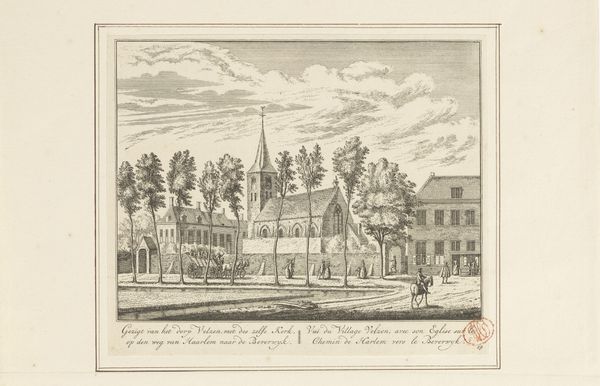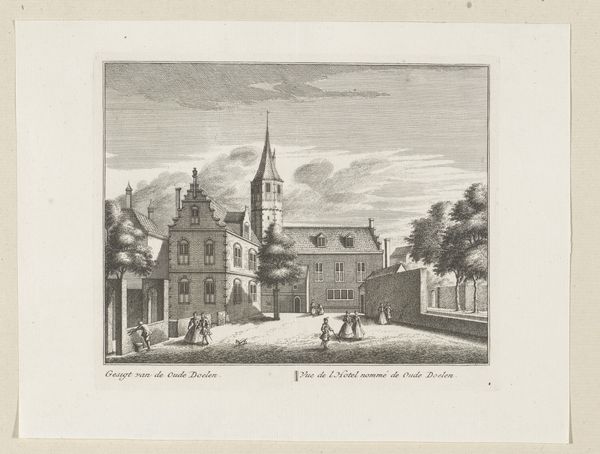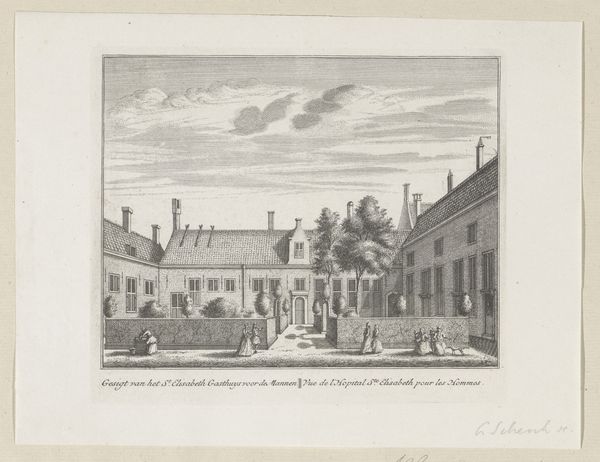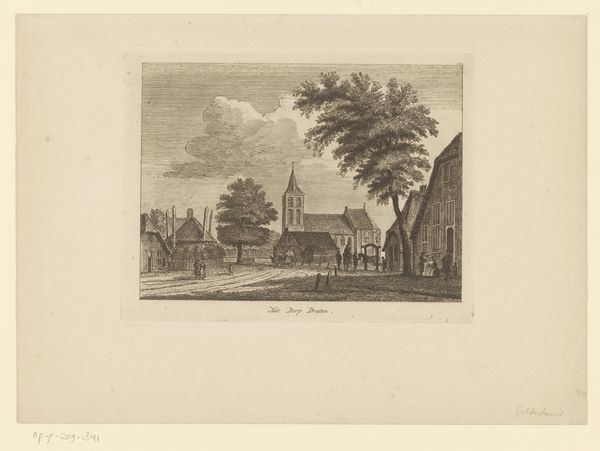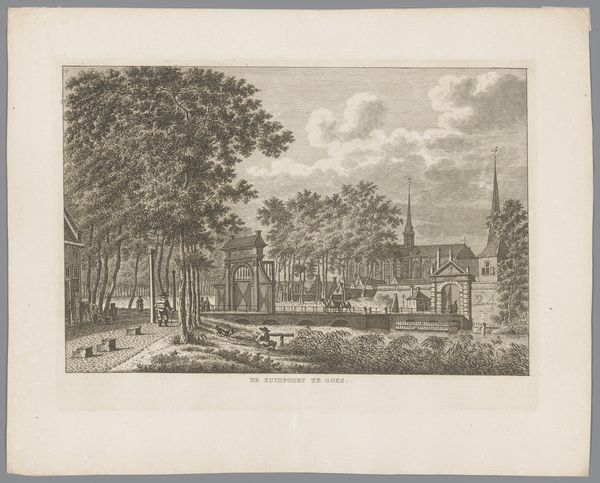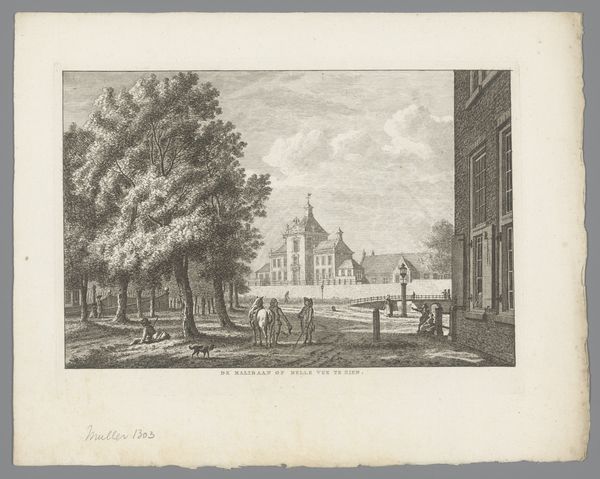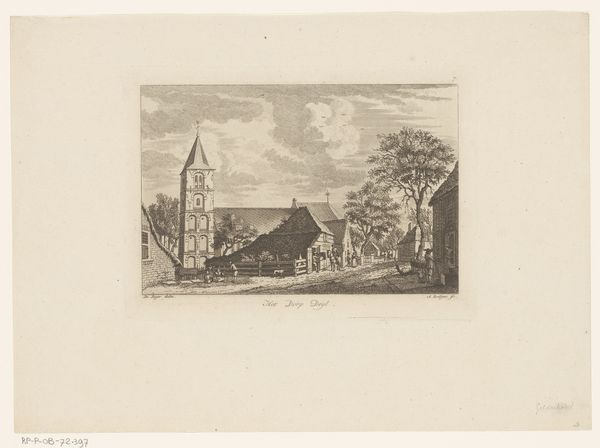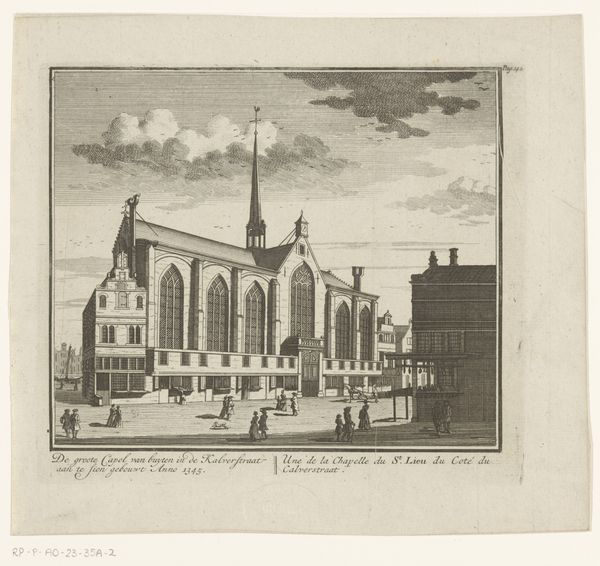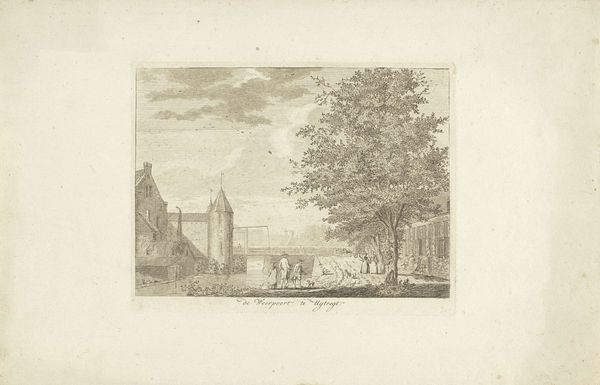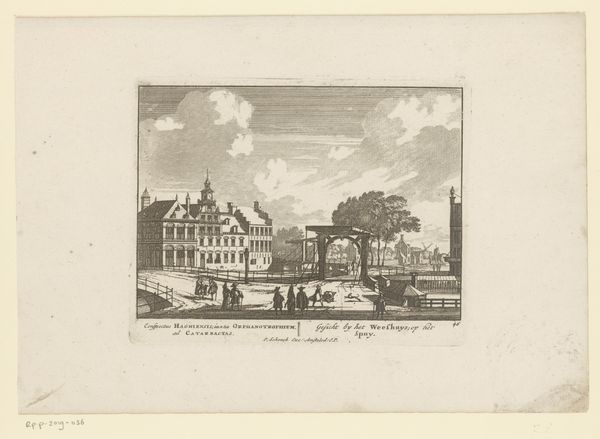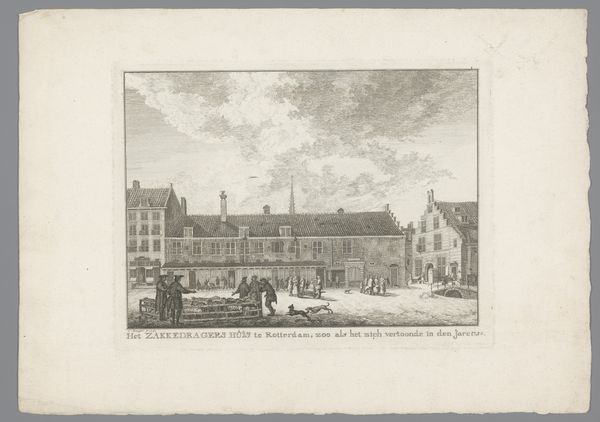
Gezicht op het Sint-Elisabethgasthuis voor vrouwen te Alkmaar 1736 - 1746
0:00
0:00
print, engraving
#
baroque
# print
#
cityscape
#
engraving
Dimensions: height 169 mm, width 198 mm
Copyright: Rijks Museum: Open Domain
Here is the view of the Sint-Elisabeth Gasthuis for women in Alkmaar, captured by Leonard Schenk. Schenk’s detailed engraving transports us to a time when institutions like this played a crucial, yet often overlooked, role in society. Gasthuizen, or guest houses, were charitable establishments, providing care for the sick, elderly, and the poor. This particular one was exclusively for women. What stories do these walls hold? What were the circumstances that led women to seek refuge here? Consider the social fabric of the 18th century, where women's roles were largely confined to the domestic sphere. For those without family or means, places like the Sint-Elisabeth Gasthuis offered a lifeline. Yet, these institutions also served as a form of social control, regulating the lives of marginalized women. Schenk's engraving invites us to reflect on the complex interplay of charity, gender, and social order in the Dutch Golden Age. It prompts us to consider the lives of the women who sought sanctuary within these walls, and the broader societal forces that shaped their destinies.
Comments
No comments
Be the first to comment and join the conversation on the ultimate creative platform.
